Solidago rugosa – Wrinkleleaf Goldenrod

Wrinkleleaf goldenrod (Solidago rugosa) is a native perennial with edible and medicinal uses. There are over 75 species of goldenrod (Solidago spp.) in the United States. All above ground parts of goldenrods are edible, but taste varies depending on species. Goldenrods can be found in areas with well-drained soil and full sun. Wrinkleleaf goldenrod […]
Plantago rugelii – Blackseed Plantain

Blackseed plantain (Plantago rugelii) is a native perennial with edible and medicinal uses. Blackseed plantain can be found in areas with compacted soil such as hiking trails. Blackseed plantain can be identified by its hairless leaves with distinct veins. The petiole is often reddish. The plant produces elongated seed capsules. Young leaves can be chopped […]
Artemisia annua – Sweet wormwood

Sweet wormwood (Artemisia annua) is a medicinal annual that has naturalized in parts of North America. Sweet wormwood can be found in disturbed areas with rocky soil. The plant can be identified by its silvery-green leaves with a feathery appearance. It produces small yellow-green flowers in late summer. The leaves have a strong aromatic scent […]
Hericium americanum – Bear’s Head Tooth
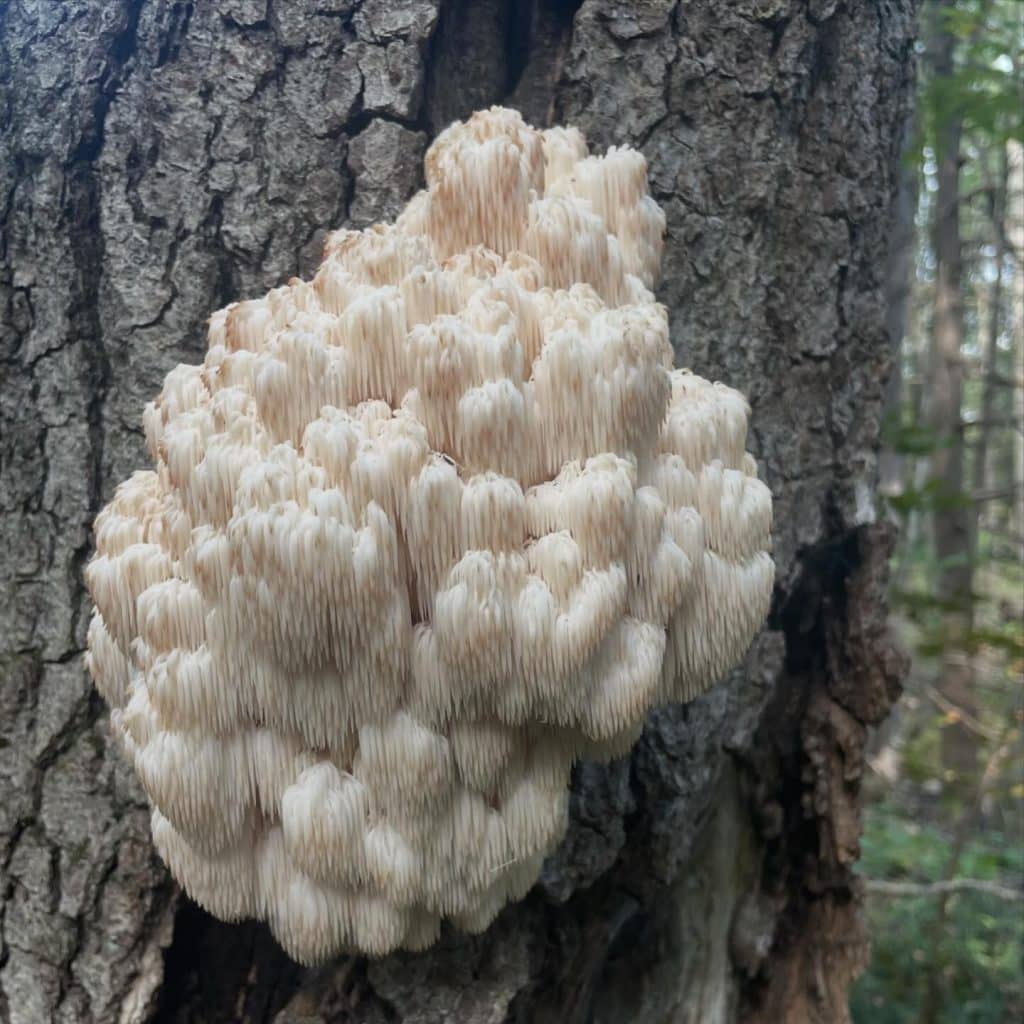
Bear’s head tooth (Hericium americanum) is an edible and medicinal mushroom that is closely related to lion’s mane (Hericium erinceus). It fruits from late August to early November. Bear’s head tooth can be found as a parasite or saprobe on hardwood trees, especially beech, oak, and maple. It is often found in damaged parts of […]
Echinacea purpurea – Purple Coneflower

Purple coneflower (Echinacea purpurea) is a native plant with edible and medicinal uses. It can be found in meadows and open woodlands with partial to full sun. The plant can be easily identified by its daisy-like flowers with purple petals. Leaves are narrow and toothed. When mature, the plant can reach up to 2 feet […]
Rosa virginiana – Wild Rose

Wild Rose (Rosa virginiana) is a native plant with edible and medicinal uses. We have six native species of wild rose in New England and two introduced species. Wild rose can be found in sandy and saline soil. It requires at least 6 hours of sun per day. Leaves are alternate and composed of […]
Panax trifolius – Dwarf Ginseng
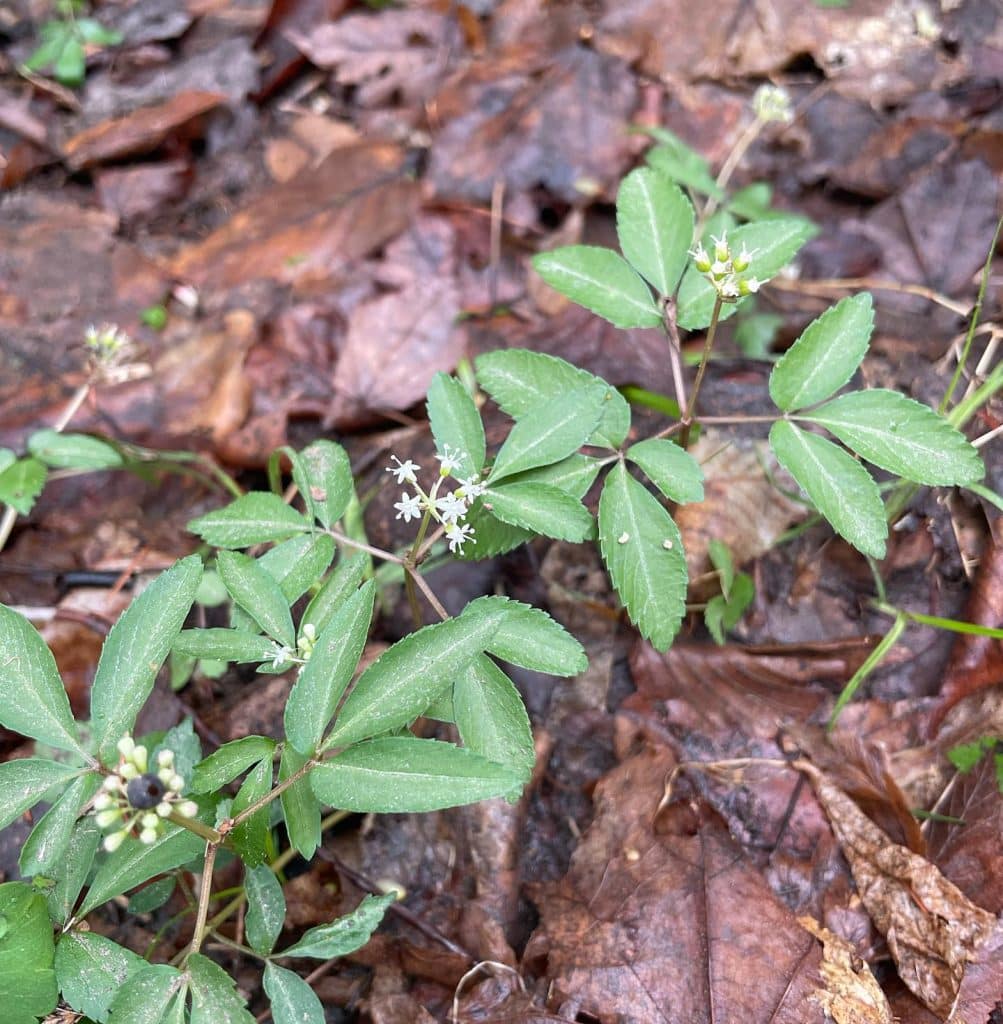
Dwarf ginseng (Panax trifolius) is a native spring ephemeral. Dwarf ginseng, also known as “groundnut”, can be found in moist areas along forested creeks. It can form dense colonies in ideal conditions. Dwarf ginseng has three leaves that are arranged in the shape of a triangle. Each leaf is made up of three or […]
Geranium maculatum – Wild Geranium

Wild geranium (Geranium maculatum) is a native perennial that blooms late spring to early summer. Wild geranium, also known as “Crane’s bill geranium” can be found growing in dense patches in deciduous woodlands and meadows. It can also be easily cultivated in partial shade to full sun. The plant has deeply lobed leaves with […]
Reynoutria japonica – Japanese Knotweed
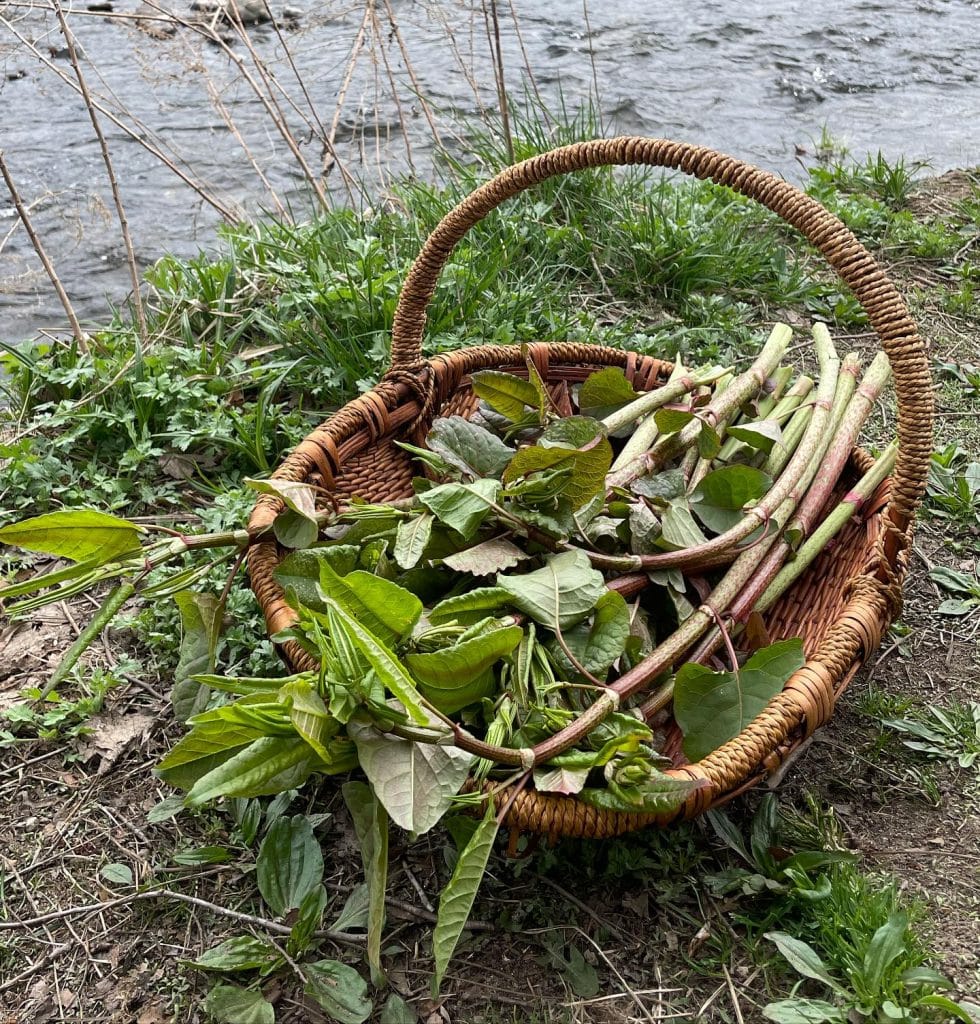
Japanese knotweed (Reynoutria japonica) is an invasive perennial that was brought to the U.S. from Asia as an ornamental. Japanese knotweed can be found in moist areas that receive sunlight. It often grows in large thickets in disturbed areas. It can grow up to 15 feet tall and its root system can reach 20 feet […]
Artemisia vulgaris L. – Mugwort

Mugwort (Artemisia vulgaris L.) is an invasive perennial plant that came from Europe. Mugwort can be found in fields, roadsides, and woodland edges that have partial to full sun. Its rhizomes exude a chemical that discourages growth of other plants. This allows mugwort to take over entire fields. Mugwort leaves have a green upper […]
Cirsium vulgare – Bull Thistle

Bull Thistle (Cirsium vulgare) is an edible plant that is native to Eurasia. Bull thistle has become naturalized in North America and is now considered invasive in some areas. There are over 200 species of thistle in North America, 60 of which are native. Thistles are related to globe artichoke. They can be found in […]
Auricularia nigricans – Ear fungus

Ear fungus (Auricularia nigricans) is a wood-rotting mushroom that can be found growing singly or in clusters on dead or dying trees. The ear fungus (A. nigricans) can be differentiated from other wood ear fungi (mushrooms in the Auricularia genus) by its upper surface which is ash-gray to yellowish brown and hairy. Wood ear mushrooms […]
Rosa multiflora – Multiflora Rose

Multiflora rose (Rosa multiflora) is an extremely prolific invasive that can form dense thickets, crowding out native plants. Multiflora rose is found in open woodlands, forest edges, fields, and margins of marshes. All roses have edible leaves and fruits (hips). Roses have compound leaves with an odd number of leaflets. The thorns are long and […]
Taraxacum officinale – Dandelion

Dandelion (Taraxacum officinale) is a non-native plant from Europe that is edible and medicinal from root to flower. Dandelions can be found in lawns, parks, meadows, and disturbed areas. They can tolerate a wide range of conditions and grow in every U.S. state. Dandelions form a basal rosette of leaves in early spring. The […]
Tsuga canadensis – Eastern Hemlock

Eastern Hemlock Trees (Tsuga canadensis) are native, common forest trees. Eastern Hemlocks can be identified by their 1/2 inch long, flat needles that have white stripes on their underside. The stems also have miniature, often upside down needles that line the top of the branches. The cones are 3/4 inch long. The trees can grow […]
Leonurus cardiaca – Common Motherwort

Common Motherwort (Leonurus cardiaca) is a non-native, medicinal plant in the mint family. Motherwort has pink tubular flowers, upper leaves lobed in three parts, and lower leaves that resemble maple leaves. The plant is bitter so does not taste or smell good, but it has been used medicinally to regulate menstrual periods, calm anxiety, and […]
Hypericum perforatum – St. John’s Wort

St. John’s Wort (Hypericum perforatum) is a non-native medicinal plant that usually flowers near the summer solstice. It can be found in sunny areas with dry, gravelly soil. St. John’s wort has five-petalled flowers with many stamens and narrow leaves which have tiny transparent dots. The flowers produce a red/purple substance when crushed called hypericin, […]
Veronica serpyllifolia – Thyme-leaved Speedwell
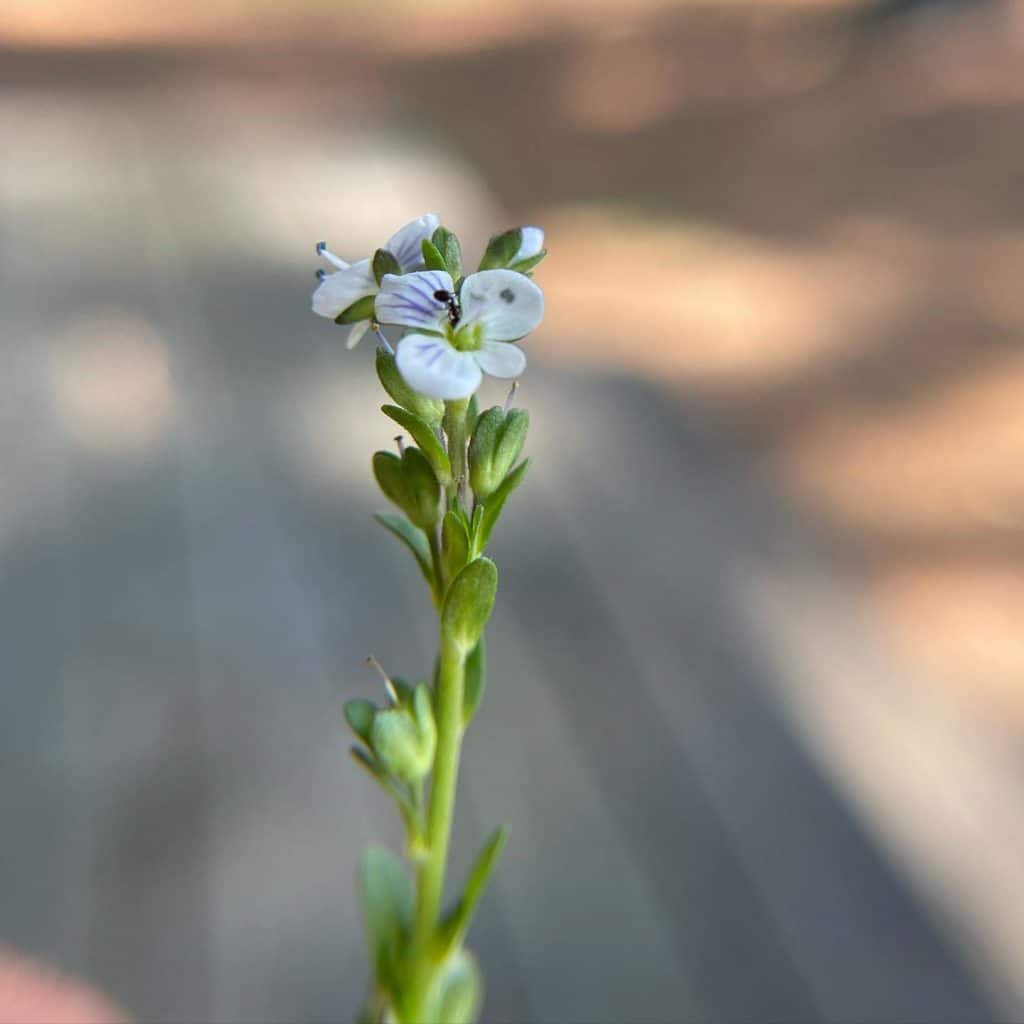
Thyme-leaved Speedwell (Veronica serpyllifolia) is an edible plant in the plantain family. It was introduced to North America from Europe. Thyme-leaved speedwell can be added raw to salads. The leaves, flowers, and stems are all edible. It has a flavor that is reminiscent of watercress. The plant has also been used medicinally to treat issues […]
Arctium lappa – Greater Burdock

Greater burdock (Arctium lappa) is an invasive plant with edible and medicinal uses. Burdock is often found in disturbed soil and along edges of fields and walking paths. Burdock is a biennial, producing a basal rosette its first year and sending up a flower stalk its second year. Burdock can be identified by its fuzzy leaves […]
Cryptoporus volvatus – Veiled Polypore
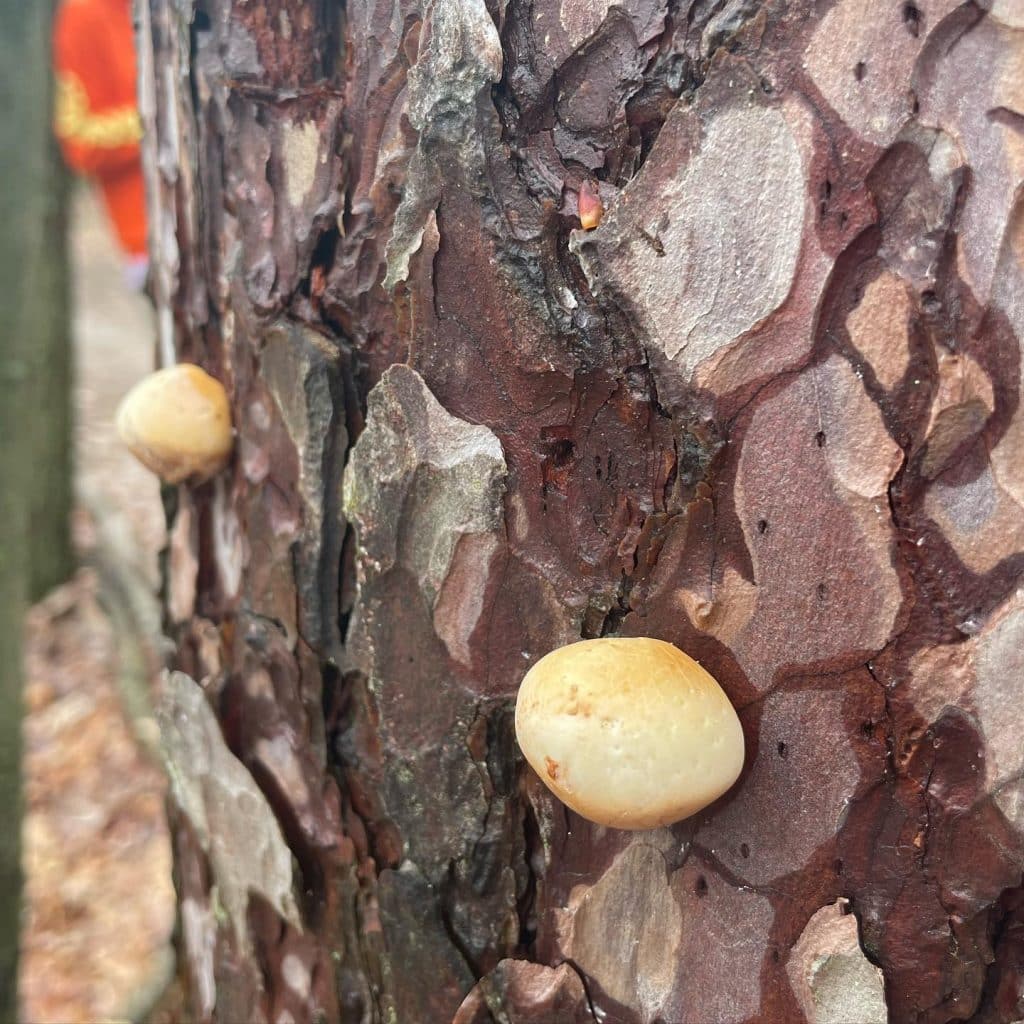
The Veiled Polypore (Cryptoporus volvatus) is a rare mushroom that grows on conifer trees. The pored surface is “veiled” by a thin, rounded layer of tissue. This allows the spores to pile up in the mushroom. When beetles enter the space, they are dusted with the spores and will therefore carry the spores into the […]
